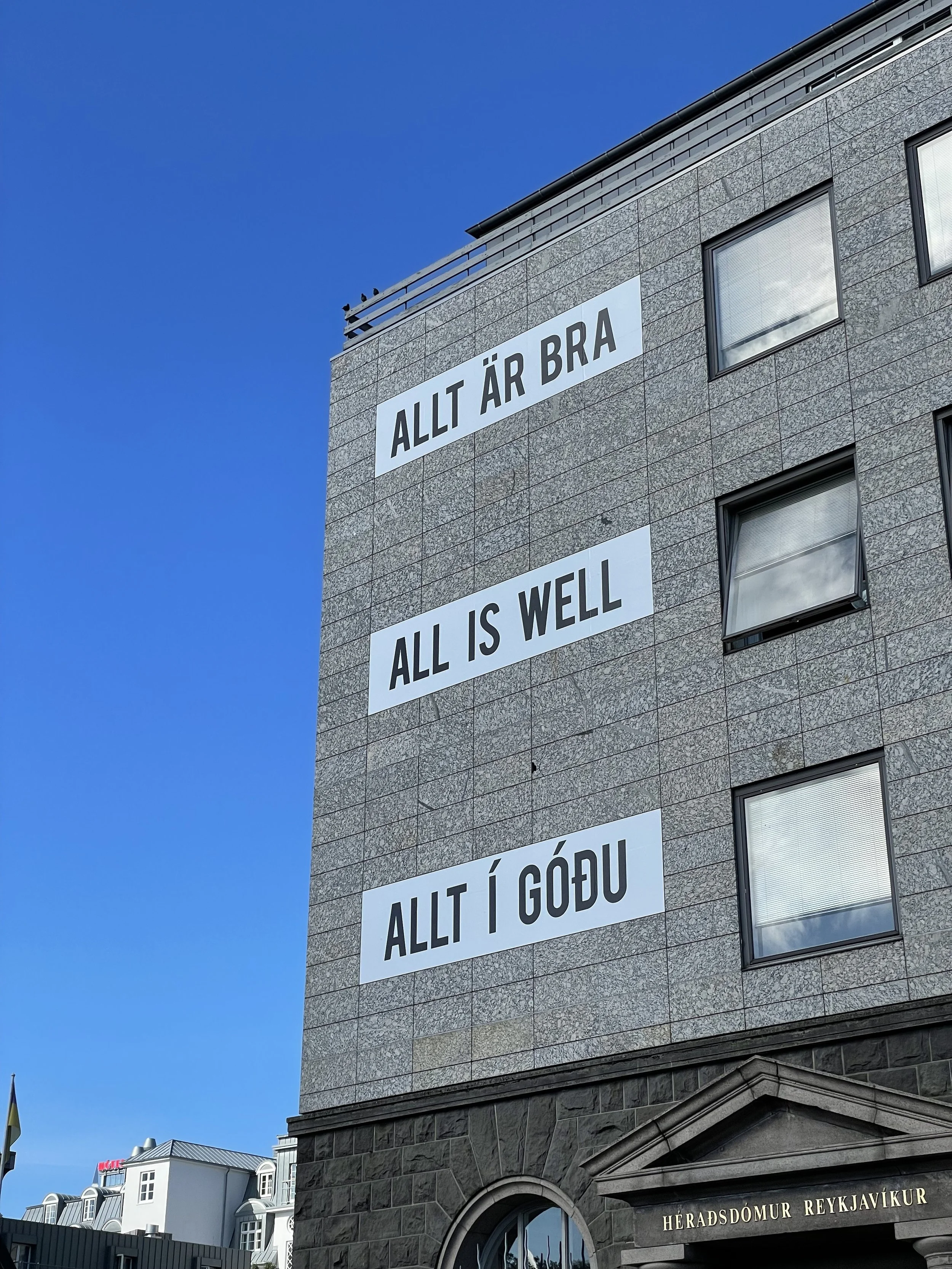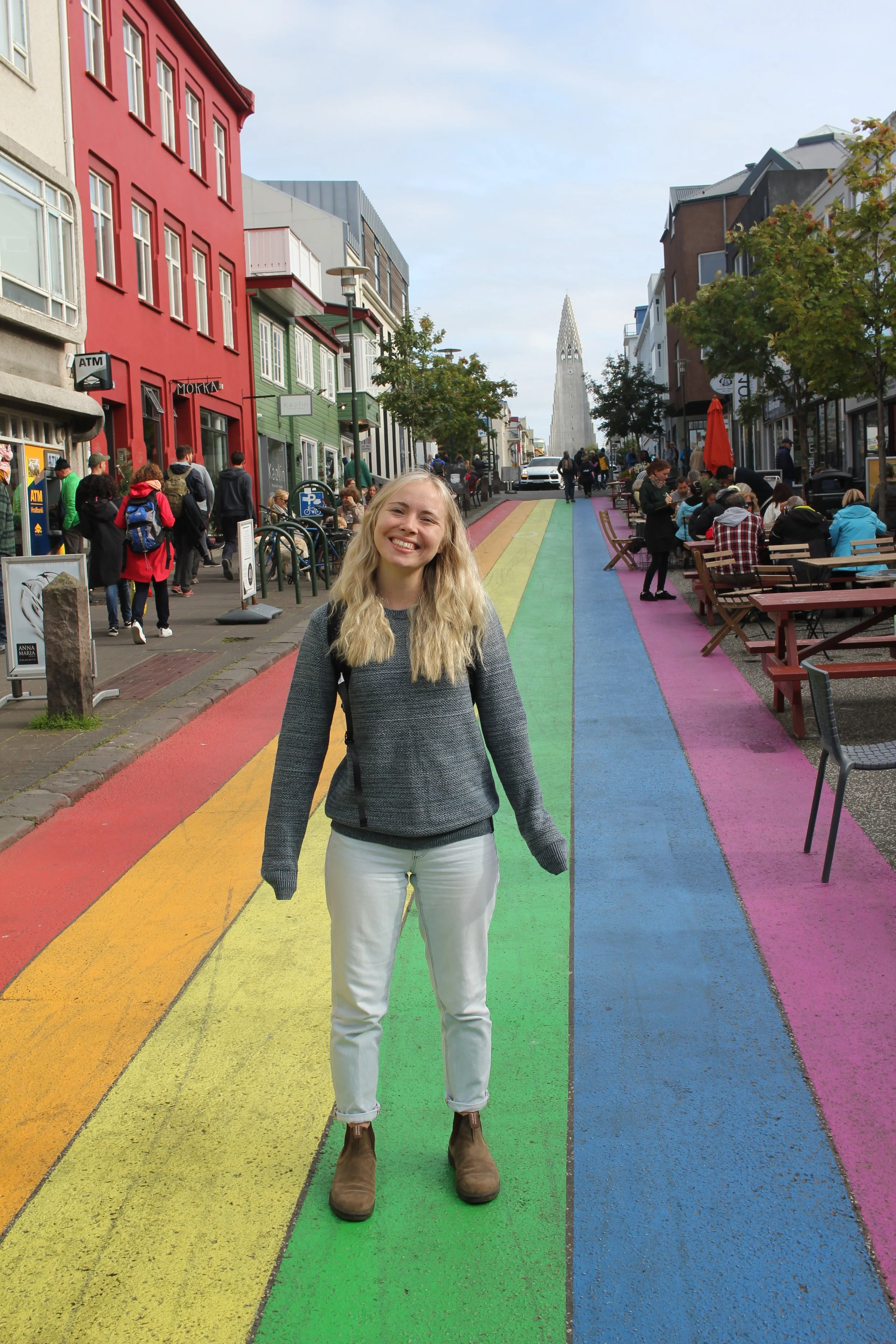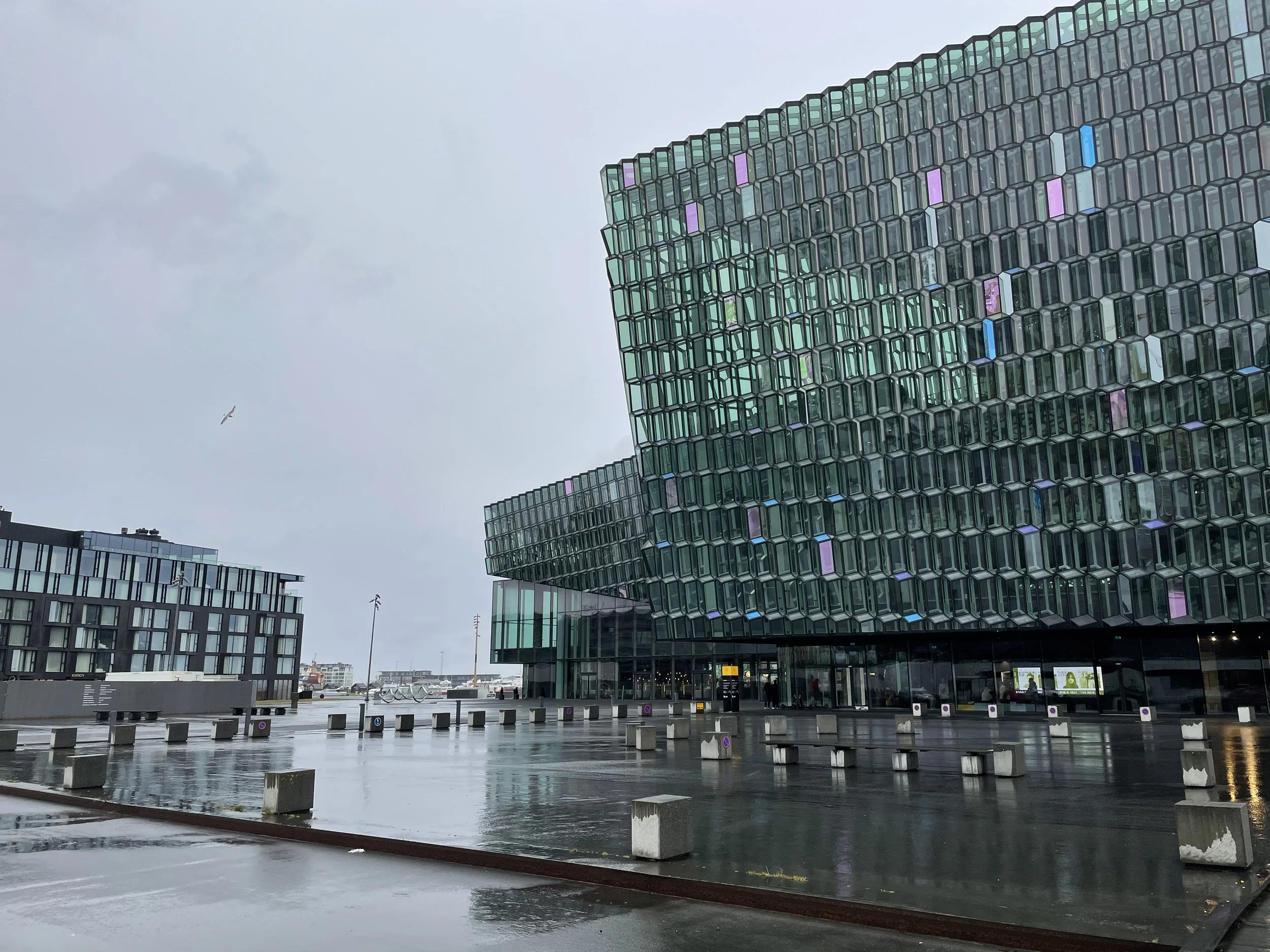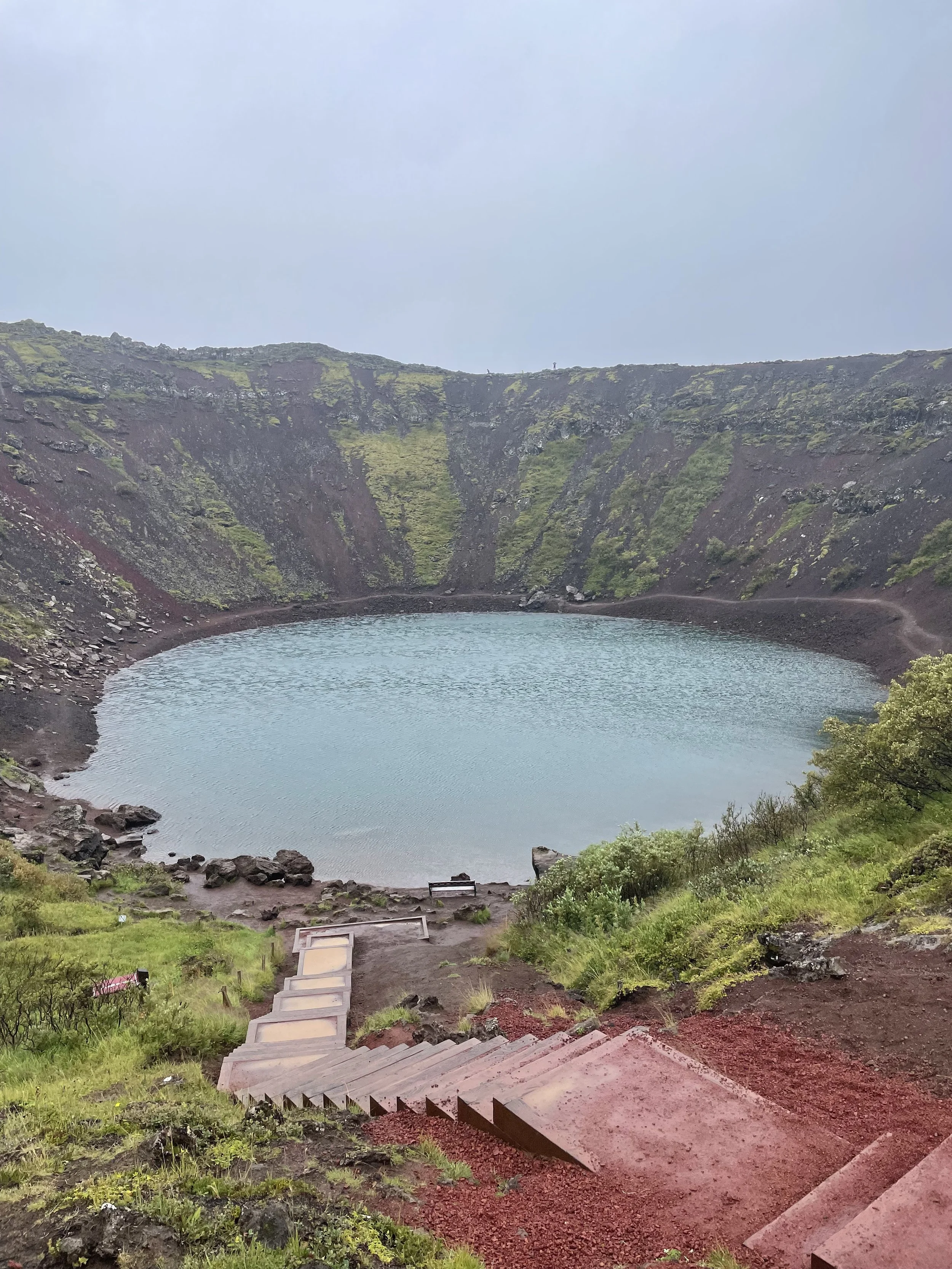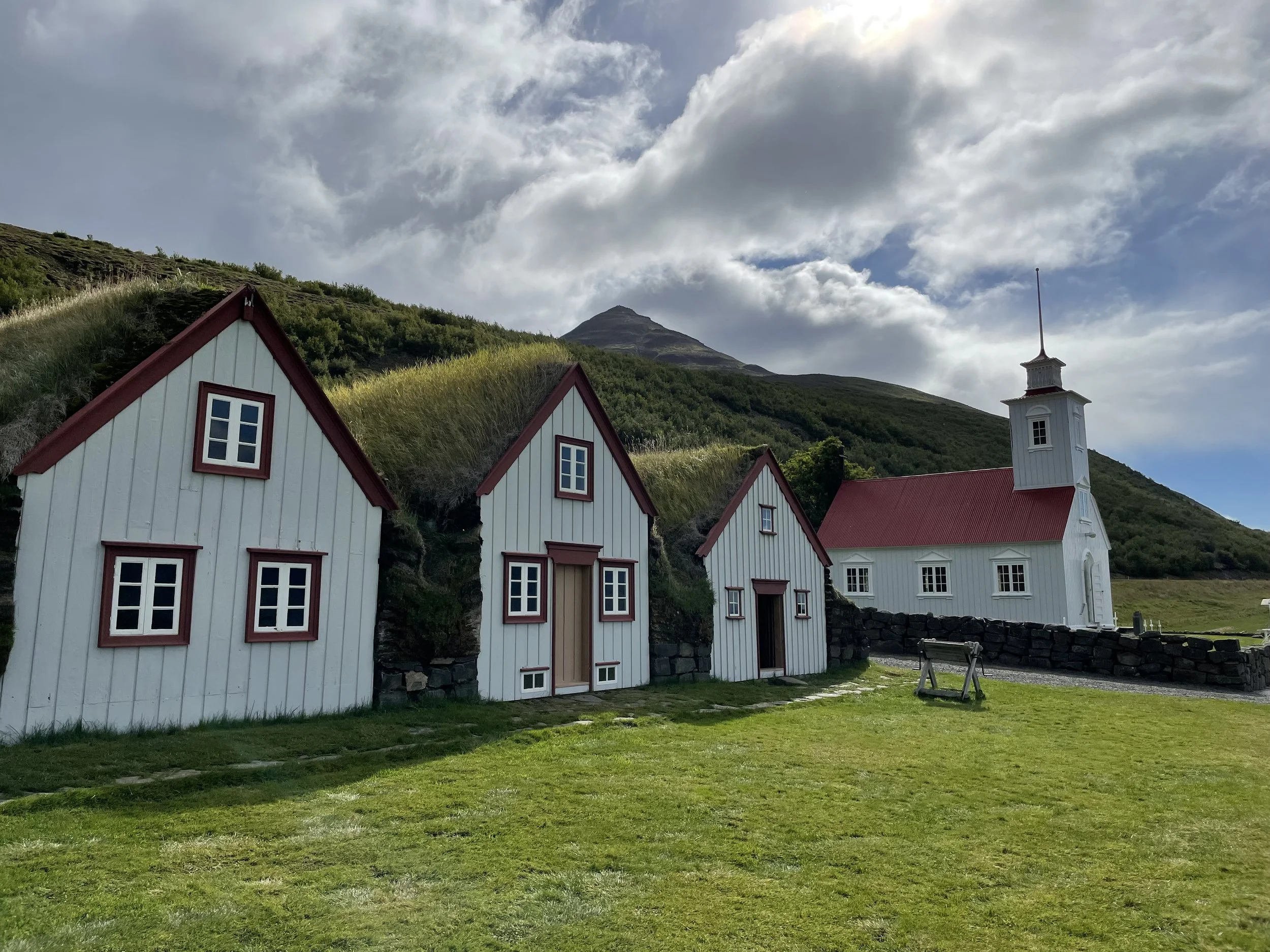Capital: Reykjavík … 366,425 People … 103,000 km² The Country
Known for vikings, elves, and pony-sized horses, Iceland is a small island nation home to an expansive terrain of untouched volcanic landscapes. As one of the last places on Earth settled by humans, Iceland has a rich history of Norse traditions and mythology. With breathtaking landscapes ranging from rugged coastlines and towering waterfalls to sharp mountain ranges and geothermal hot springs, Iceland is an outdoor enthusiast’s paradise.
Fun Facts
Beer was banned in Iceland until 1989
Iceland has been rated the safest country in the world by the Global Peace Index
Iceland is the only NATO country without an army, airforce, or navy.
My Experience
Throughout my adventures, I have never experienced as much uncertainty, anxiety, and sleepless nights planning a trip. Not only has Iceland & Greenland been a dream of mine to visit for quite some time (which already created a needlessly high expectation), I had two obstacles that were a first for me: passport woes and COVID-19 avoidance.
As I started planning more and more for my first trip after the majority of COVID-19 restrictions were removed around the world, my excitement for travel was clearly matched by everyone else. My passport expired in June 2020, 3 months after tourism around the world shut down. Passport offices were closed across the country, and once they reopened, I quickly completed an application.
After calling the passport office, I was told to wait until much closer to my travel date to reapply- being advised to wait until June 2022. I was told 2 months was more than enough time to process my renewal, and re-applying earlier than April would be a waste of time since the turnaround for renewals was only two weeks.
This became the worst piece of advice I have ever received. Full stop.
In June I was told at my appointment that, although originally they promised a two-week turnaround for my passport, the new service window was 13 weeks. With an unsympathetic remark, I was told It would be very unlikely that I would get my passport in time, and that I should have planned better. Cue the next 2 months of calling the office to find slivers of information; feeling a sense of pointlessness in booking anything in Iceland. I was stuck in a perpetual state of travel planning purgatory.
On August 11th, only three days (one business day!) before my flight left out of Vancouver, I received a call saying I could pick up my passport. Crisis averted, planning could officially commence. A huge sense of relief was met only by the fear that either myself or my partner, Kelsey, was going to test positive for COVID somewhere along our journey and be unable to continue the journey. Proof of a negative test was required at the time to continue to Greenland. We packed our bags, got on our flight, and hoped for the best.
Arriving into Iceland
Kelsey and I arrived at Keflavik Airport, just outside of Reykjavík, at 6am. Jet lag has never affected me much, most likely because I sleep like a baby on planes. Perhaps it was the anticipation of my first international trip in three years, but I didn’t sleep for a second. We left a sunny 23° day in Vancouver to an equally sunny but much cooler 7° morning. As we disembarked the flight, we could all see our breath hanging in the air. I knew Iceland wasn’t going to be tropical, but seriously? The need for more than 2 layers in August?
For travellers arriving at Keflavik and are in search of a snack, please heed this warning: multiple cafes, smoothie stands and food areas only sell to travellers departing from the airport, not arriving. Are there massive signs indicating this fact? Yes. Did Kelsey and I miss these signs in a stereotypical unaware tourist faux pas? Absolutely we did.
After trying to pay for two coffees and being told we actually couldn’t purchase anything here, the worker kindly pointed out our error. “Don’t worry at all though!” she smiled. “Go ahead and enjoy. Welcome to Iceland!”. We enjoyed our coffees with equal parts shame, equal parts appreciation for how kind she was- a common theme that was consistent with the Icelandic people that we met.
My parents, also joining us on the trip, arrived a few hours after we did. Unlike us, they flew through Toronto, Pearson Airport - at the time the second worst airport in the world for travel delays and had a notorious issue with losing luggage. Miraculously, my parents arrived early with all of their luggage in tow.
We loaded up our bags into the car of a driver named Eddie. The moment we stepped outside the cool air hit our faces with force. He quickly noticed and proudly exclaimed “Fresh! I know!”
Day 1
As we started the drive into Reykjavík, the lunar-like scenery surrounded us. From the plane, the landscape looked almost surreal. A jaded, flat terrain dotted with volcanos and columns of steam. From the car, however, the highway was encompassed by rough textured fields covered in a greenish-yellow moss. Along the horizon was a mushroom cloud coming from the Fagradalsfjall volcano, which started erupting two weeks prior to our arrival. A volcano we knew had to see.
The road from Keflavik to Reykjavík was unlike anything I have ever seen; like a European settlement built on a distant planet. Brightly coloured homes were grouped in small clusters, backed by an incredible view of the North Atlantic. The countryside shifted slowly to a quaint city, reminding me immediately of Aarhus, Denmark - a small but vibrant place filled with cozy shops on every corner, modern buildings built along the waterfront, and souvenir shops as far as the eye could see. We dropped off our bags at the hotel, I grabbed my camera, and we wandered into Reykjavík’s city centre.
Reykjavík was filled with expansive green spaces, and one of the first places we visited was Arnarhóll. Named after the first settler of Iceland, Ingólfur Arnarson, the hill looks out over Reykjavík’s Old Harbour. We then strolled to a cafe beside the Héraðsdómur Reykjavíkur courthouse. Three large signs on the courthouse displayed a hopeful message in Swedish, English, and Icelandic: Allt Är Bra, All is Good, Allt Í Góðu
Call me superstitious, but after months of stress planning this trip, seeing these signs immediately put me in a good mood.
We eventually found Skólavörðustígur shopping street, a famous pedestrian pathway with boutique shops, restaurants and more, all leading up to Hallgrimskirkja church. The street was painted as a rainbow to celebrate Reykjavík Pride, an addition that has recently been made permanent.
Along Skólavörðustígur Street was a culinary experience that I would highly recommend to anyone visiting Reykavik: The Lebowski Bar! With dozens of varieties of White Russians, this bar (although perhaps not the most authentic Iceland experience), was a great place to relax and watch The Big Lebowski on a constant loop.
From there, Kelsey and I continued along Skólavörðustígur before arriving at Hallgrímskirkja Church. Reaching nearly 250 feet, it is the largest church in Iceland and one of the largest structures in the country. Of course, we had to climb it. Atop the church was a viewing platform to see the small yet vibrant city, as well as the Atlantic Ocean that we were only days away from beginning to cross.
Standing proudly in front of the church was a statue of Leifur Eiríksson, the famous viking explorer that was the first European to arrive in North America. The statue was a gift from from the United States in 1932, and actually predates Hallgrímskirkja by more than 13 years! The church was built in 1945 and was designed to resemble the mountains and glaciers across Iceland.
At this point, jet lag (for the first time ever, I must mention) got the best of me. I stumbled back to our hotel, enjoyed a geothermally heated shower, and went to sleep at the nocturnal time of 6pm.
Day 2
As we were sleeping, a massive storm rolled into the area- covering the city in a thick haze and pounding rain. Before the day could officially begin, we had to quickly run to Harpa, a beautiful concert hall in downtown Reykjavík with an exterior of coloured glass. Were we rushing to see the Iceland Symphony Orchestra? Even better, we had the exciting opportunity to get an invasive COVID-19 test to ensure we could continue our journey in the next few days and sail to Greenland.
Months of anticipation all came down to this one test. I tried not to think about it much once we were there, but intrusive thoughts go well with intrusive swabs. After the most thorough COVID test I have ever had, Kelsey and I walked along the waterfront to pick up our rental car. Within 5 minutes we received automated text messages confirming we were negative, and for the first time in months, I felt like I could actually breathe.
In an industrial area North of Reykjavík, we picked up the keys to our car- a bright red Hyundai i10. The car was accompanied by a large warning sticker saying that damage due to volcanic ash was common and explicitly not covered. Not something you see every day.
At first, we attempted to drive to Fagradalsfjall volcano to start our hike. The 120km/hr winds should have been the first indication that it wasn’t going to happen, but we tried anyway. Along the highway a roadblock was created to tell hikers, including ourselves, that the hike was closed due to obviously dangerous conditions as well as toxic fumes from the volcano being blown across the hiking trail.
After a quick replanning session, we were off: driving East to experience our own attempt at the Golden Circle, a roundtrip experience of some of Iceland’s most scenic landmarks and views. The town of Grindavik, our first rest stop quickly turned into an expansive landscape of sharp peaks, the occasional flock of sheep, and streams of glacier runoff. Although starting on the most popular sightseeing route in the country, there were often times we wouldn’t see another car for upwards to 30 minutes. Peaceful is an understatement.
The first stop of the day was the Kerið Crater, a three-thousand-year-old caldera nearly 150 feet deep. The rain wasn’t letting up, but that wasn’t going to deter us from hiking to the bottom of the crater and seeing the pristine water at the bottom. After 30 minutes of fighting the elements and getting soaked through our clothes, we hiked out of the crater and continued on the trek.
The rain began to let up just for a moment, and an incredible rainbow appeared across the horizon. Seeing the opportunity, we quickly pulled over to grab some photos. I also attempted to fly my drone, but a gust of wind promptly shot it straight back into the ground. Aerial photos would have to wait.
We then arrived at Strokkur, an active geyser that erupts every 10 minutes, occasionally reaching up to 40 meters high. There’s no warning when it will erupt, so crowds would form patiently waiting for the few seconds of eruption. We parked our car and walked through fields bubbling with steam- clearly an innocuous place to be. Warning signs were displayed everywhere warning that water temperature could exceed boiling, and to not get too close. So, of course, we got a front-row view. After waiting for 11 minutes (of course, just outside the usual 10-minute window), we experienced not one but two geyser eruptions. The steam made waiting in the cold absolutely worth it, as the warm steam rejuvenated our senses.
Continuing along, we eventually reached Gullfoss Waterfall. Originally planned to be the location of a hydroelectric plant in 1907, the owner of the waterfall, Tómas Tómasson, had a daughter named Sigríður Tómasdóttir that fought to keep the waterfall free of industry. Eventually threatening to throw herself into the waterfall if a plant was built, the idea was abandoned in 1929, making the site publicly available for all. She is now known as Iceland’s first environmentalist.
Translated as the Golden Falls, the waterfall is located within a canyon offering incredible views of rushing water and roaring rapids. The wind constantly brought up spray from the falls, instantly chilling us once again. As much as we wanted to stay to enjoy the immensity of the falls, the sun was beginning to set and we had to return to Reykjavík.
Along the route back, we began to see more and more of Iceland’s most well-known animal: the Icelandic Horse! We saw fields of pony-sized horses grazing throughout the countryside, hundreds of horses on a single stretch of highway. The best moment, however, was when a large sign displayed the invitation “Pet Icelandic Horses!”. Too enticing of an offer to refuse.
With a roadside stand selling “horse candy”, we spent time with three horses that were very inclined to take our treats, not as inclined to be pet. We were the only people enjoying this pasture, fighting the wind and rain to show these animals some love.
Just outside of Reykjavík, the sun poked through the clouds, and I carefully unpacked my drone at a rest stop to try getting aerial photos one more time. The results were incredible, showing how expansive the scenery is in Iceland - no traffic, no malls, just land as far as the eye could see.
Back in Reykjavík, it was time to have a real Icelandic culinary experience. Not the Big Lebowski Bar, but food we’re unable to get anywhere else. I never shy away from trying strange food; dog in North Korea was at the top of the list, and it’s a list I was (and still am) looking to add to. So, for dinner that night, we enjoyed 4 Icelandic delicacies:
Hákarl: fermented shark. Smelling of ammonia and leaving an aftertaste like poison, I can assure you it doesn’t taste as good as it sounds
Reyktur Lundi: smoked puffin. Adorable animal, even better food. Although a bit gamey, this was a delicious treat.
Hrár Hvalur Sasimi: raw whale meat sashimi. Tasting like beef, this whale was actually quite tasty. While in Norway a few years prior I missed the opportunity to eat whale, and I knew I had to try it here. No regrets.
Grillsteikt Hrossafille: grilled horse. By far the star of the show. It wasn’t lost on me that I was petting an Icelandic horse a few hours prior, but wow- if you’re looking for a fillet that melts in your mouth, this well-seasoned horse would win any race.
Day 3
Without a doubt, this was one of the most exciting and impactful days I have ever had travelling. A full day of nonstop experiences and breathtaking views that all started at 5am.
We left our hotel in the dark and watched the sunrise crest over the mountain peaks. After an hour of driving we enter Þingvellir, an expansive national park formed by centuries of erosion and tectonic activity, creating otherworldly views. This UNESCO site is located between the North American and Eurasian tectonic plates, which move apart nearly an inch every year. It’s the only place on earth where you can stand between tectonic plates; but what if you want to do more than just stand?
Kelsey and I dawned sporty drysuits, received a brief history lesson on the area, and dived into Silfra- a fissure created in 1789 by earthquakes in the area. Said to have the clearest water in the world, we knew this would be a great way to wake up.
Kelsey and I, along with our tour guide and another couple, put on our snorkelling masks, stepped off the platform, and jumped into the icy water. Hovering around 2° year-round, the dry suit kept us warm, but our uncovered faces got the jolt of a lifetime.
Upon entering the water, the sounds of the world stopped. Þingvellir was already quiet, but inside Silfra was a (literally) breathtaking experience. With more than 100m of visibility, it doesn’t even seem like you’re in the water. Just floating through a crystal blue valley, unburdened by everything except the buoyancy of your drysuit. Get water in your snorkel? No problem, just drink the freshest glacier water on earth. Not a great swimmer? Don’t worry, a gentle current pushes you along through the fissure. I found myself trying to slow down more than actually swimming forward- it was too relaxing to want the experience to stop. All good things must come to an end, however, and we eventually crawled out of the fissure, enjoyed some hot cocoa and cookies, and continued with our day.
Heading south through the town of Selfoss, we eventually found ourselves at Hafnarskeidh - a black sand beach completely devoid of other people. We discovered this by accident, simply looking for a place to take a quick nap. Kelsey and I walked up and down the beach, enjoyed the crashing waves, and enjoyed looking out over the North Atlantic.
It was time for the main highlight of the trip: Fagradalsfjall volcano. This was the last opportunity we had to do the hike before going to Greenland, so we hoped the weather in the area had improved from the day before.
The rain subsiding and the sun coming out should have been the sign that the trail was open, but the first thing we noticed was thousands of cars parked in makeshift parking lots and on the side of steep roads. This must be it!
After parking on a grass patch next to a few hundred other vehicles (ranging in size from Smart Cars to 50-seat buses), we began to hike up the volcano. At first, the path was flat and covered in a thick layer of dirt, and it continued like this for 30 minutes or so. I joked to Kelsey about how easy it was, and then we noticed something: a ridge-line, hundreds of meters above us, speckled with the vibrant colours of hiking jackets. In front of us was a series of steep switchbacks taking us straight to the top. Efficient, but the 45 minutes to get up there was the true catalyst that made me start working out again once I got back home.
At the top of the ridge, the dirt path turned to large volcanic stones covered in a thick layer of moss. Dubbed “the ankle breaker” by other hikers, this area had not yet been constructed for tourists. It didn’t bother Kelsey or me much, but we definitely had to watch our step.
To the left of us was an incredible view of the ocean and other mountains, while to the right of us was a valley coloured black by previous volcanic eruptions. Planes and helicopters began to circle above us, clearly giving much richer tourists a unique view of the eruption. We knew we were getting close. We walked down through the valley covered by igneous rock, feeling the metallic crust scrape on our boots. Through this path, we then began to see smoke just a kilometre or so ahead of us.
After only a few hours of hiking, we witnessed Fagradalsfjall at perhaps the best time possible. The volcano erupted for less than three weeks: August 3rd - August 21st, 2022. We made it to the summit on August 18th.
Words can’t describe how explosive and radiant the eruption was. In-person, the lava almost seemed cartoonish- the brightest shade of orange I had ever seen. The lava wasn’t just bubbling, it was exploding out of the black mass of hardened magma. Just as we arrived, a rainbow appeared behind the volcano, adding an even wider display of colours. Exhausted, I sat on the jagged rocks, pulled out my camera, and started shooting.
Unlike what one may think, it was freezing up there. We weren’t about to walk down and start poking and prodding the flowing lava, so the only safe place for hikers to be was on the ridge beside the eruption (still only a few hundred feet away). This didn’t stop hikers from walking down, but after seeing a few people slip, I was content where I was. Dozens of drones were flying around the volcano, a few even getting splashed with lava. A kind stranger with a much nicer drone than mine surprised us by taking a candid video of us staring at the eruption, transfixed on the flowing lava. We sat for nearly an hour, mesmerized by the shocking display of nature before the cold got the best of us and we hiked back down through the volcanic valley.
We made it back to the car, breathed a sigh of relief, and started to see the sun fall to the horizon. But the day wasn’t over yet! Just 30 minutes from the volcano was another incredible sight to see in Iceland: the Blue Lagoon
The Blue Lagoon is a geothermal spa named one of the 25 Wonders of the World by National Geographic. The water can reach up to 240° underground, but by the time the water reaches the lagoon, it’s a warm 38°. The water is coloured blue from silica in the water, which is also known to cleanse the skin.
As we entered the water, it felt as if we were walking into a warm bath (quite the opposite of Silfra). With mud masks and free drinks, we floated in the baby blue water as the sun began to set, painting the sky in a vibrant orange reminiscent to that of Fagradalsfjall. After hundreds of kilometres driven and 14 kilometres hiked, we relaxed in the spa knowing that we just saw the highs and lows of Iceland - literally.
Day 4
Although not the most adventurous day, we had a few hours left before boarding our ship to the north of Iceland. We returned our car, walked back along the waterfront, and went on the hunt for Pylsa - Icelandic hotdogs. Made from Icelandic lamb, these hotdogs feature raw onions, remoulade, and a variety of other tasty sauces and toppings.
Bæjarins Beztu Pylsur was a small hot dog stand we found with a line around the block. Surely this must be it. As we approached the window, they proudly displayed a picture of Bill Clinton enjoying a hot dog. I’ve heard these hot dogs were good, but good enough for a presidential endorsement?
Step aside New York, Reykjavík has the best hotdogs I have ever tried. How Iceland could produce this work of art, alongside fermented shark, I will never know.
After walking through more of downtown Reykjavík (and Kelsey stopping to pet every cat she saw), we picked up a few bottles of Brennivín, a famous Icelandic spirit. If yesterday was the day of adventure, today was the day of food and liquor.
With our purchases in hand, as well as a few souvenirs for friends and family, we packed up our things, arrived at Skarfabakki harbour, and began the journey to Akureyri.
Day 5
As we arrived at Akureyri’s port in northern Iceland, both Kelsey and I were eager to explore. Although Akureyri is Iceland’s 5th largest municipality, less than 20,000 residents live in the area. Located at the end of the Eyjafjörður fjord, the longest fjord in Iceland, the town is situated safely between high slopes on either side.
After disembarking, we ventured north to the Laufás Heritage Site, a farmstead inhabited since 874 in the municipality of Grýtubakkahreppur. Built and rebuilt over hundreds of years, these turf houses were originally created with grass and rocks. Overlooking the fjord, this small church has welcomed Christian priests and ministers since 1047. Walking into the houses, it quickly became a maze of low ceilings and creaky floorboards. Since these houses are covered by dirt, grass and rocks, it was clear to see why it felt like we were underground- only a few windows provide light within the houses.
Next, we drove to Goðafoss Waterfall. Known as the waterfall of the gods, it was named this way due to settlers believing in Norse religions, although there was pressure to convert to Christianity. Iceland’s legislative assembly was debating which religion to follow, and law speaker Þorgeir Ljósvetningagoði was tasked with making a decision (knowing that by following paganism, they were more likely to be invaded). After a day and night of thinking, he threw pagan idols into the waterfall, declaring Iceland a Christian nation.
Goðafoss was an incredible sight to behold. Without many people, the views were unmatched and the trails surrounding the falls were stunning. The thunderous sounds of crashing water was heightened by our ability to walk down to the base of the falls, getting thoroughly soaked in the process. Smaller waterfalls were surrounding the mouth of the falls, boasting natural beauty anywhere you looked. Besides Fagradalsfjall, this was my favourite view in all of Iceland.
Before hopping back on the ship to start our journey to Greenland, we stopped by the Akureyri Botanical Garden- famous for being the northernmost botanical garden in the world. The gardens feature 430 native species and more than 6000 flowers, plants, shrubs and trees. We took a rest on the grass, surrounded by Arctic plants, some of which were planted more than a hundred years ago.
We walked back to the ship and started sailing out of the Eyjafjörður fjord. With phenomenal views on both sides, it was hard to decide where to look. Eventually, the rugged peaks of Iceland began to fade away into the distance, and we began looking forward.
We wouldn’t see land again for a few more days, but that evening, a solar storm occurred right above us. 200km north of Iceland, the sky lit up with a flurry of bright purple and green streaks, rapidly moving and changing shape as we continued along to Greenland. An incredible experience I’ll remember forever as we said farewell to Iceland.
Photos of Iceland





